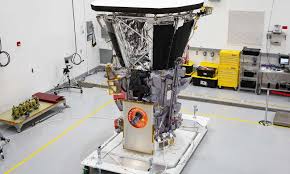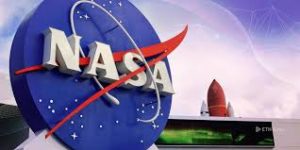NASA To Launch Closest Ever Mission To Sun ‘Parker Solar Probe’
Space Agency NASA is readying its probe to send it closer to the Sun than any other research spacecraft has every went so nearer to it.

The spacecraft named as Parker Solar Probe will withstand heat while zooming through space to get more knowledge of how solar winds work.
The size of the robotic spacecraft is that of a small car and is to be launched from Cape Canaveral in Florida province on or around August 6 for a total period of the seven-year mission.

The Sun’s corona which is within 3.8 million miles (6.1 million km) of the solar surface is going to be the place where the spacecraft will come closer to the star. The mission will be seven times closer than any other spacecraft till now.
“To send a probe where you haven’t been before being ambitious, to send it into such brutal conditions is highly ambitious,” Nicola Fox, a project scientist from the Johns Hopkins University Applied Physics Laboratory, told a news conference on Friday.
The last closest pass to the Sun was made by a probe called Helios 2. The range was within 27 million miles (43 million km) in 1976.
If compared, the average distance from the Sun to the Earth is 93 million miles (150 million km).
The corona makes the solar wind to rise in a continuous flow of charged particles that permeates the whole solar system.
Our planet’s magnetic field can get disturbed by the unpredictable solar winds and it can play havoc with communications technology on Earth.
The Space Agency is optimistic that the findings will help scientist to forecast changes in Earth’s space environment.
“It’s of fundamental importance for us to be able to predict this space weather, much like we predict weather here on Earth,” said Alex Young, a solar scientist at NASA’s Goddard Space Flight Center in Maryland.
“In the most extreme cases of these space weather events, it can actually affect our power grids here on Earth.”
Under NASA’s Living With a Star Program, the project is the first major mission and is tagged at price USD 1.5 billion.
The special probe is ready to use seven Venus flybys over nearly seven years to enable itself to reduce its orbit around the Sun. This will be done using such instruments that are designed to image the solar wind and also study electric and magnetic fields, coronal plasma around the sun and its energetic particles.
The aim of NASA is to make a collection of data about the inner workings of the highly magnetized corona.

The space probe is named after American solar astrophysicist Eugene Newman Parker. It will have to withstand and survive the intense and difficult heat and radiation conditions.
The structure is outfitted with a heat shield designed to keep all of its instruments at a tolerable 85 degrees Fahrenheit (29 degrees Celsius) in such conditions that the spacecraft faces temperatures as high as 2,500 degrees Fahrenheit (1,370 degrees Celsius) for one of its closest pass.
You May Also Read: Air India’s US to Mumbai Bound Flights Has Got Unexpected And Unwanted Travelers, Bed Bugs!